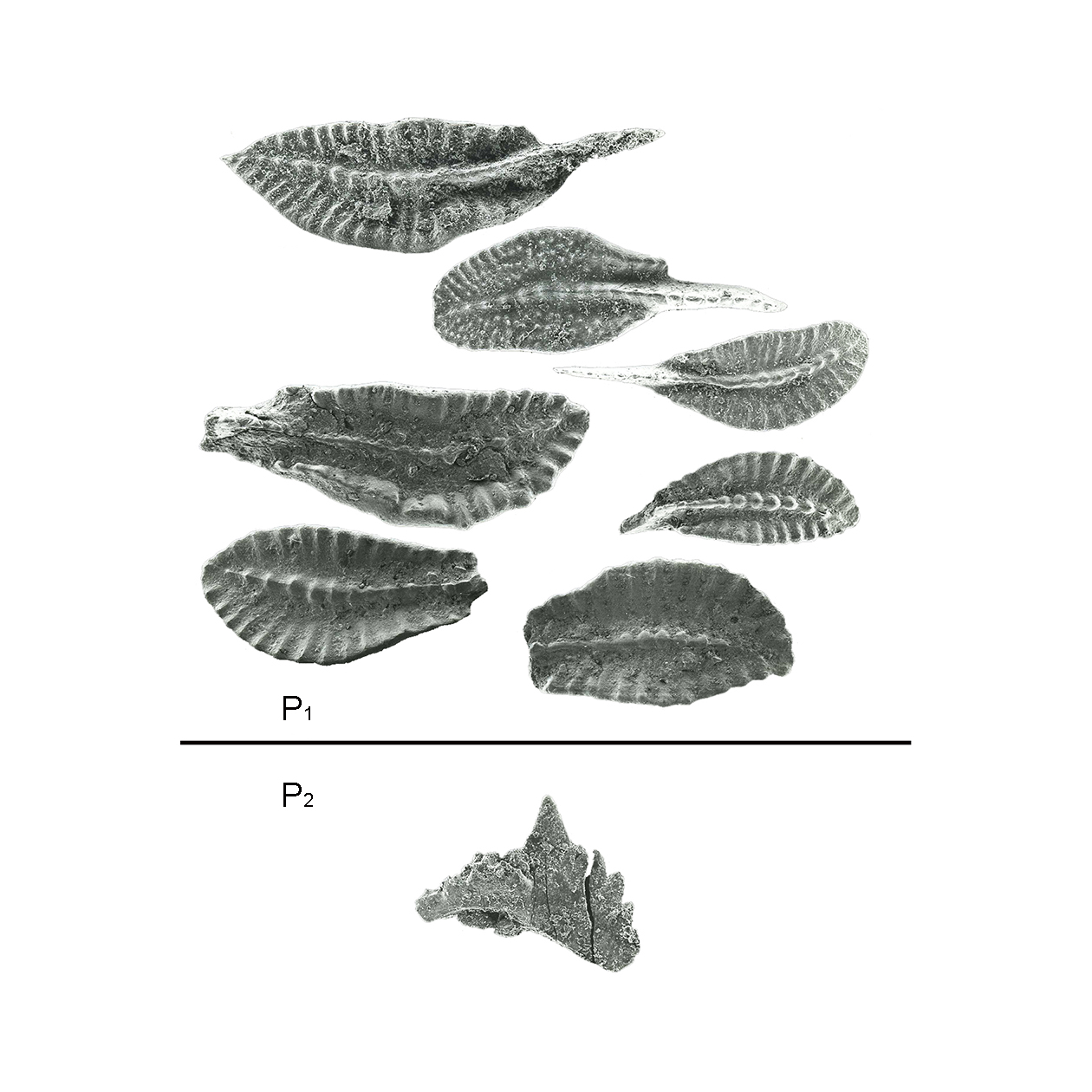Pinacognathus sulcatus (Huddle, 1934)
Sugerowana cytacja: Moczyński 2016. Pinacognathus sulcatus (Huddle, 1934) . Ikonoteka (http://ikonoteka.paleo.pan.pl/xwiki/bin/view/Species/Pinacognathus+sulcatus)
Diagnoza In Kowala the largest sample of its sp elements has been collected 15.2 m below the top of the section. It shows significant variation in the diagnostic curvature, most elements being laterally bent (Fig. 14N). The basal cavity is also variable in adult specimens being slightly swollen and Pseudopolygnathus-like. Dzikowiec samples Dz-65 and,Dz-3t provide the most numerous elements of the species (Fig. laA-D). They show much variation in the curvature of the sp elements, symmetrical elements not being rare. Generally the basal cavity shows the morphology typical of Siphonodella, that is fusiform in shape, but a few very mature specimens are in this respect somewhat transitional to Pseudopolygnathus. The only co-occurring oz elements that could belong to the same apparatus are rather robust and variable in morphology. They tend to develop a narrow platform along the dorsal process that gives them a slightly 'notognathella' appearance (Fig. 14B). Singular recognised elements of the symmetry transition series show some resemblance to elements of the younger Pinacognathu.r sp. although they are not so specialized morphologically. More numerous oz and, symmetry transition series elements (included in the reconstruction in Fig. 24) belonging to the species have been encountered in samples from the Muhua section. In sample Mt-24,just above the marls with concretions marking the top of the Devonian rocks, oz elements are rather variable in morphology, only some develop a platform at the robust inner process. Morphologies somewhat similar to those associated with S. duplicata occur there, too. In sample Mu-25, immediately above in the section, only robust oz elements occur, associated with the symmetry transition series elements closely similar to those of Pinacognathus. Polygnathus gedikiLnppold, 1994,co-occutingwith P. sulcatus at Hangenberg in the Rhenish Massif (Luppold et al. 1994), seems to be based on adult sp elements of this species. The type population of Polygnathus sulcata Huddle, 1934 comes from the upper New Albany Shale near its top just above gray-green shale containing Devonian brachiopods near Rockford, Indiana (Huddle 1934; Sandberg et aI.1972). Porównanie Autekologia Występowanie geograficzne Zasięg czasowy Materiały muzealne Literatura |
|


